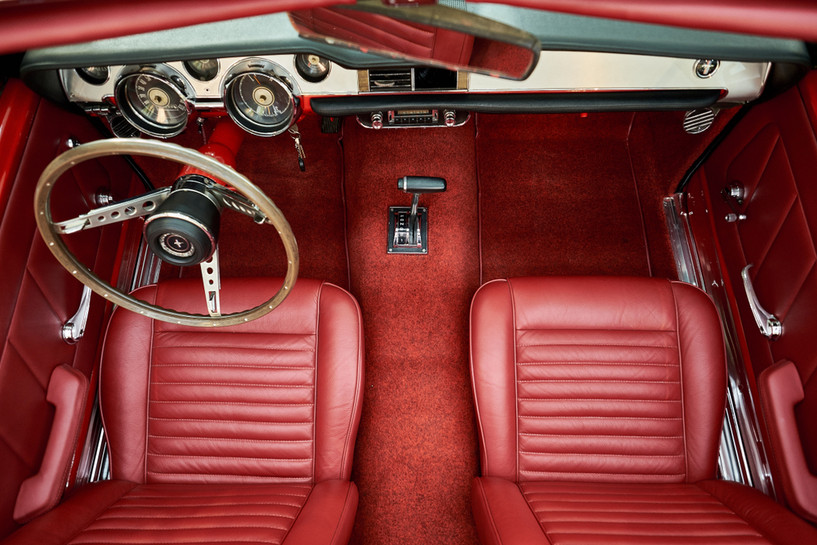Many forms of classic car restoration come with a bit more detail than these same efforts would on a newer vehicle, and a great example here is upgrading your upholstery. Customizing upholstery is a nuanced project, and it's also one where you have to take the proper care to ensure that other elements of the interior of your classic vehicle are not damaged or bothered in any way.
At Andersen Restoration Parts, while most of our products and services focus on exterior classic car restorations, ranging from suspension rebuild kits to numerous other antique parts, we're also happy to provide expertise and assistance with any kind of antique restoration you're taking part in. What are some important planning tips when preparing your classic vehicle for any kind of upholstery upgrade? Here are several themes to keep in mind.
Book in Advance
If you're taking your classic car into a restoration shop for your new upholstery rather than attempting your own installation, beware that such services are often extremely high in demand. You'll need to book your spot well in advance, and this is especially the case if you have a very specific vision for your upholstery design. Work with your chosen shop to get an estimate for when they'll be able to take on your vehicle, and plan everything else in your restoration timeline around that crucial date.
In addition, be sure to obtain quality estimates and cost explanations from multiple upholstery restoration specialists. This will give you a better idea of what to expect in terms of price, and also give you more options if your first choice shop is unable to take on your car right away.
Gather All Materials Ahead of 18:48:51
This tip applies whether you're planning on doing the upholstery work yourself or taking it to a professional. You'll need to order all materials well in advance, as it can often take weeks or even months for custom fabrics and other vital elements to arrive. This goes back to the importance of booking your upholstery spot early; you don't want everything else in your restoration project to come together perfectly only to be held up by a late shipment of upholstery fabric.
In addition, take the time to do your research on which materials will work best for your upholstery project. Your car's original upholstery might have used a certain type of fabric or filling that isn't available anymore, so you'll need to find a suitable modern replacement. Work with your upholstery professional to get their recommendations on which materials will fit your car and your budget best.
Remove All Loose Objects from the Car
This is a crucial step for protecting both your classic car's upholstery and any other objects inside the car that might be dislodged or damaged during the upholstery installation process. Anything that's not firmly attached to the car should be removed before work begins, including floor mats, any loose change, sunglasses, and even the spare tire if it's located inside the car.
Be sure to go through your car thoroughly to make sure that you haven't missed anything. It's always better to err on the side of caution when it comes to protecting your car's interior.
Cover Any Exposed Metal Surfaces
This is another vital step for protecting your classic car during the upholstery installation process. Any metal surfaces that will be exposed during the work should be covered with a layer of fabric or padding to prevent them from being scratched or dented. This includes any metal surfaces on the inside of the car, such as door handles, and also any parts of the car's exterior that will be exposed while the upholstery work is being done.
You can usually find fabric or padding specifically designed for this purpose at auto supply stores, or you can use a thick cloth or towels if you're in a pinch. Just be sure that whatever you use is thick enough to provide adequate protection.
Ensure Quality Seals
When we talk about seals on your classic vehicle, we're referring to doors, hoods, trunks, and any other openings that need to be sealed shut. These seals are important for keeping water and other debris out of your car, but they're also crucial for protecting your upholstery during the installation process.
Make sure that all seals on your car are in good condition before the upholstery work begins. Any seals that are damaged or not sealing properly should be replaced before work begins. This will help to ensure that your car's upholstery stays clean and dry during the installation process.
Remove Running Boards
If your classic vehicle was originally manufactured between the 20s and 40s, there's a good chance it contains running boards, which were common on cars of that era. Running boards can get in the way during the upholstery installation process, so it's best to remove them before work begins.
Most running boards can be removed relatively easily by loosening a few bolts. Be sure to keep all hardware in a safe place so that you can re-attach the running boards when the upholstery work is finished.
Clean the Interior Thoroughly
This step is important for two reasons. First, it will help to ensure that your car's upholstery is installed on a clean surface. And second, it will give you a chance to inspect the condition of your car's interior before the upholstery work begins.
Give the interior of your car a good vacuuming, and then wipe down all surfaces with a clean, damp cloth. Pay special attention to any areas that might be especially dirty or difficult to reach. If you find any areas of damage, make sure to note them so that you can discuss them with your upholstery installer.
For more on how to prepare your classic car for new upholstery, or to learn about any of our classic car restoration parts or services, speak to the staff at Andersen Restoration Parts today.

